Seaweeds of the South African South Coast


Order Nemodermatales
Family Zeacarpaceae
Zeacarpa leiomorpha R.J.Anderson, Simons & J.J.Bolton 1988: 320, figs 2-8
Plants forming smooth greenish-brown to dark brown crusts, sometimes streaked with golden yellow, a few to 10 cm or more in diameter and ca. 1mm thick. Structure pseudoparenchymatous; basal region of one to several layers of tightly adherent horizontal filaments, cells 15-25 µm long x 5-8 µm in diameter, curving upwards and giving rise to a layer of closely-packed vertical filaments with cells shorter but of similar diameter. Cells with several discoid parietal plastids. Lower surface of crust attached by numerous short multicellular rhizoids. Phaeophycean hairs only seen on material with plurilocular sporangia; few, in bundles as in Ralfsia.
Unilocular sporangia in sori formed from erect, loose, unbranched filaments up to 250 µm and 12-25 cells long, with lower and upper cells shorter and narrower than cells in the middle; sporangia fusiform to needle-shaped, 20-35 µm long x 4-6 µm in diameter, arising in clumps of several to ten, borne on a single lateral outgrowth from cell of loose soral filament; 1-3 sets of sporangia produced per soral filament; each sporangium containing 16 spores when mature. Although plurilocular sporangia are described and illustrated in Stegenga et al. (1997), it is not certain that these belong to Zeacarpa: they may be of Ralfsia.
Collections, ecology and regional distribution
Subtidal from just below LWS to at least 10 m depth, usually epilithic but sometimes epizoic on mollusk shells. Recorded from Yzerfontein on the west coast to Double Mouth, near Morgan Bay (14-43), but probably more widely distributed.
World distribution: South African endemic.
Type locality: Hout Bay, Western Cape (Anderson, Simons & Bolton, 1988).
Notes: 1. Vegetative crusts of Zeacarpa leiomorpha are indistinguishable from those of Ralfsia. The only practical morphological distinction between these genera relies on the unilocular sporangia.
2. The recent molecular study of Kawai et al (2016) erected the new Family Zeacarpaceae to accommodate this genus and species.
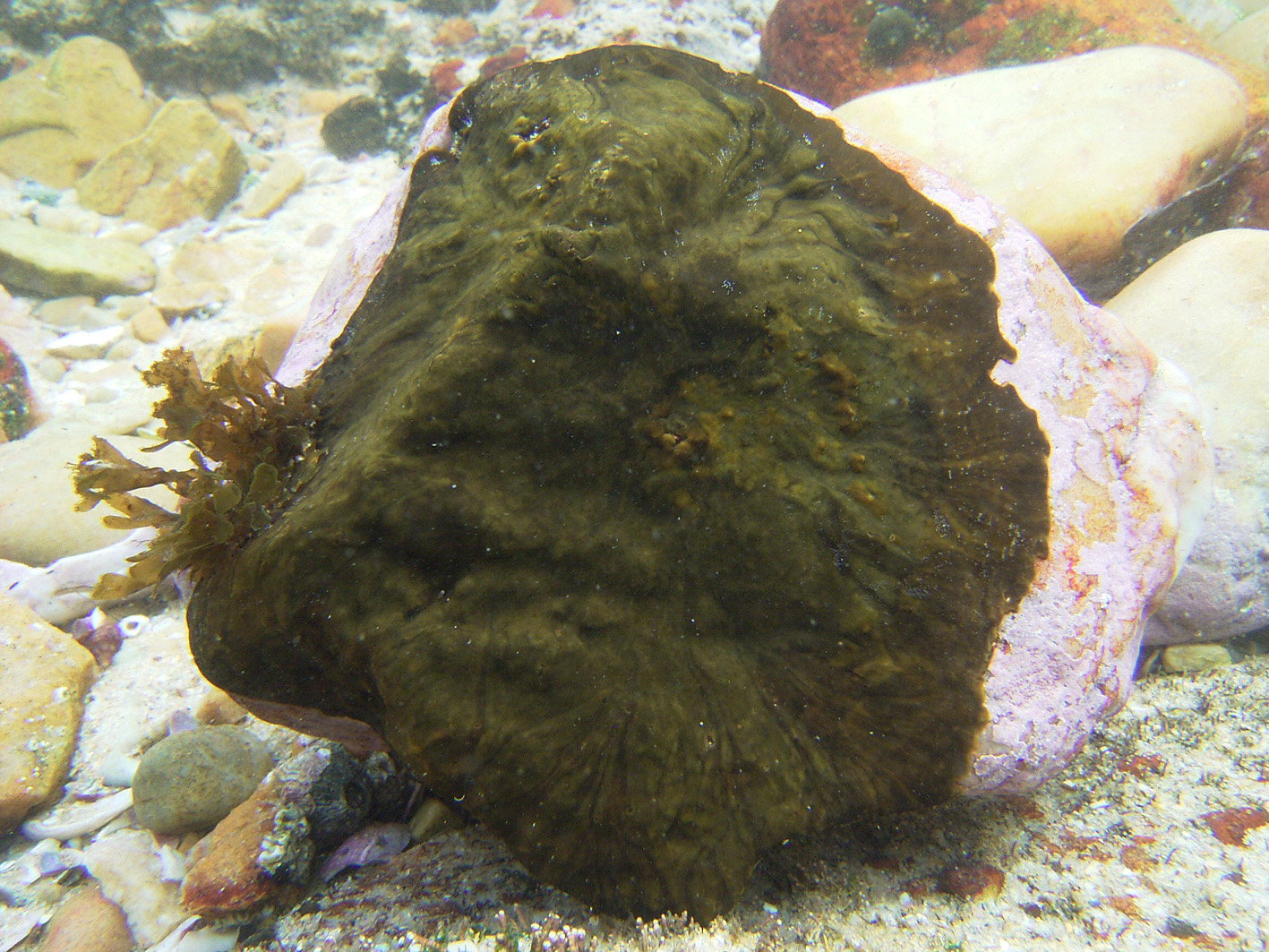
Zeacarpa leiomorpha, Grootbank (Tsitsikamma) showing typical streaked crust, rock ca 15 cm diameter.
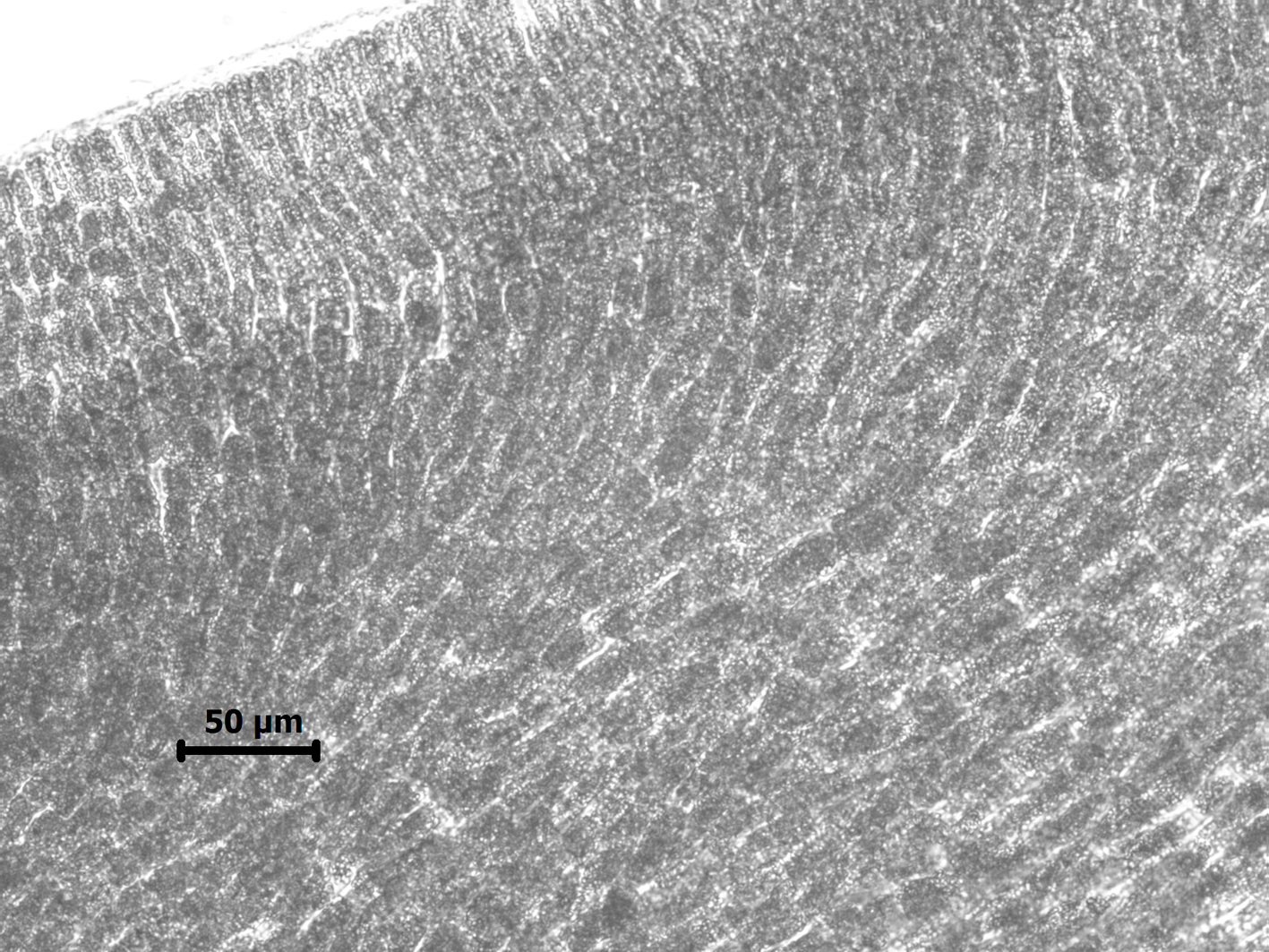
Zeacarpa leiomorpha, XS of vegetative crust showing upward-curving lines of cells.
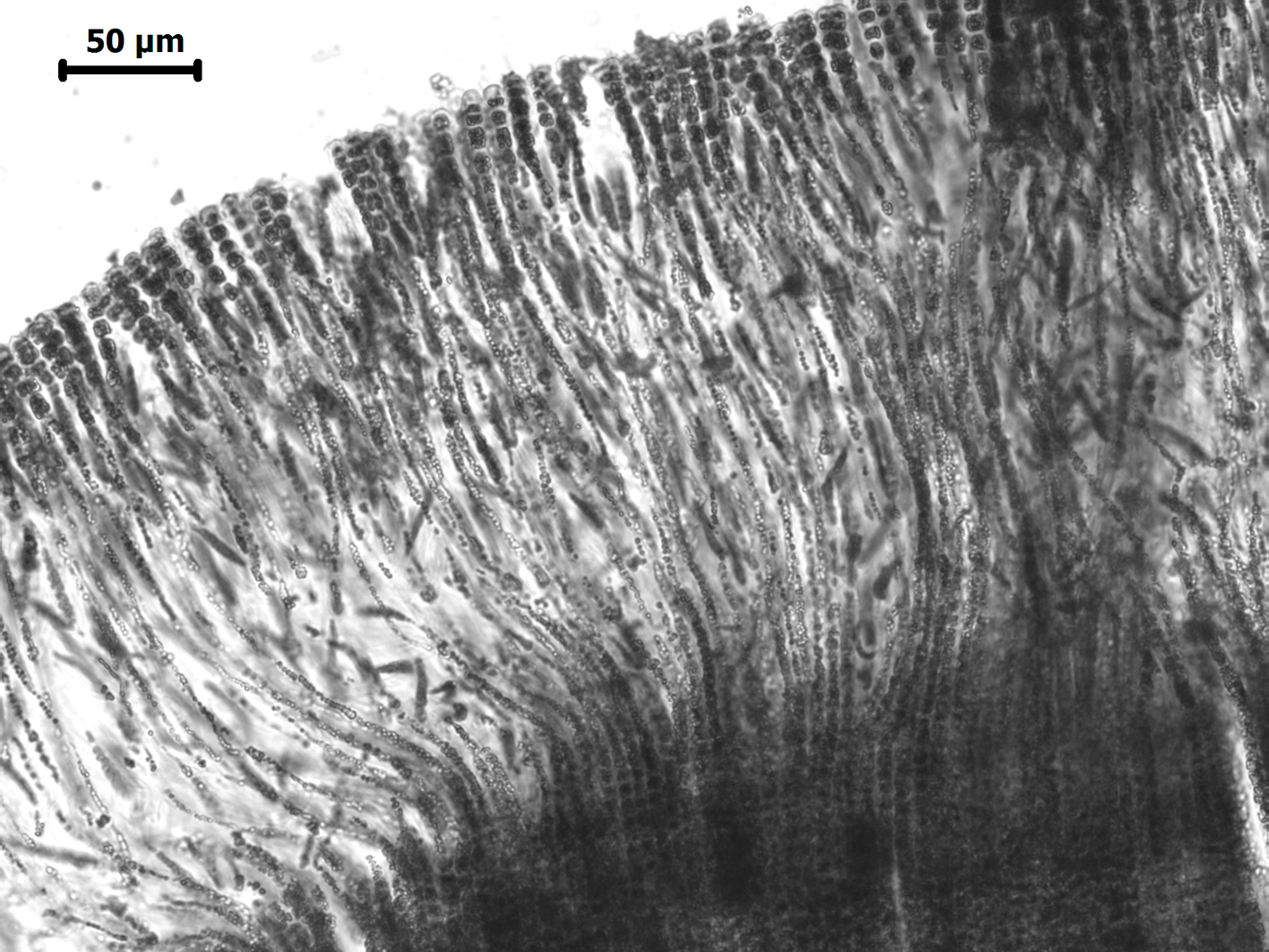
Zeacarpa leiomorpha, XS of type specimen, through sorus of unilocular sporangia and paraphyses.
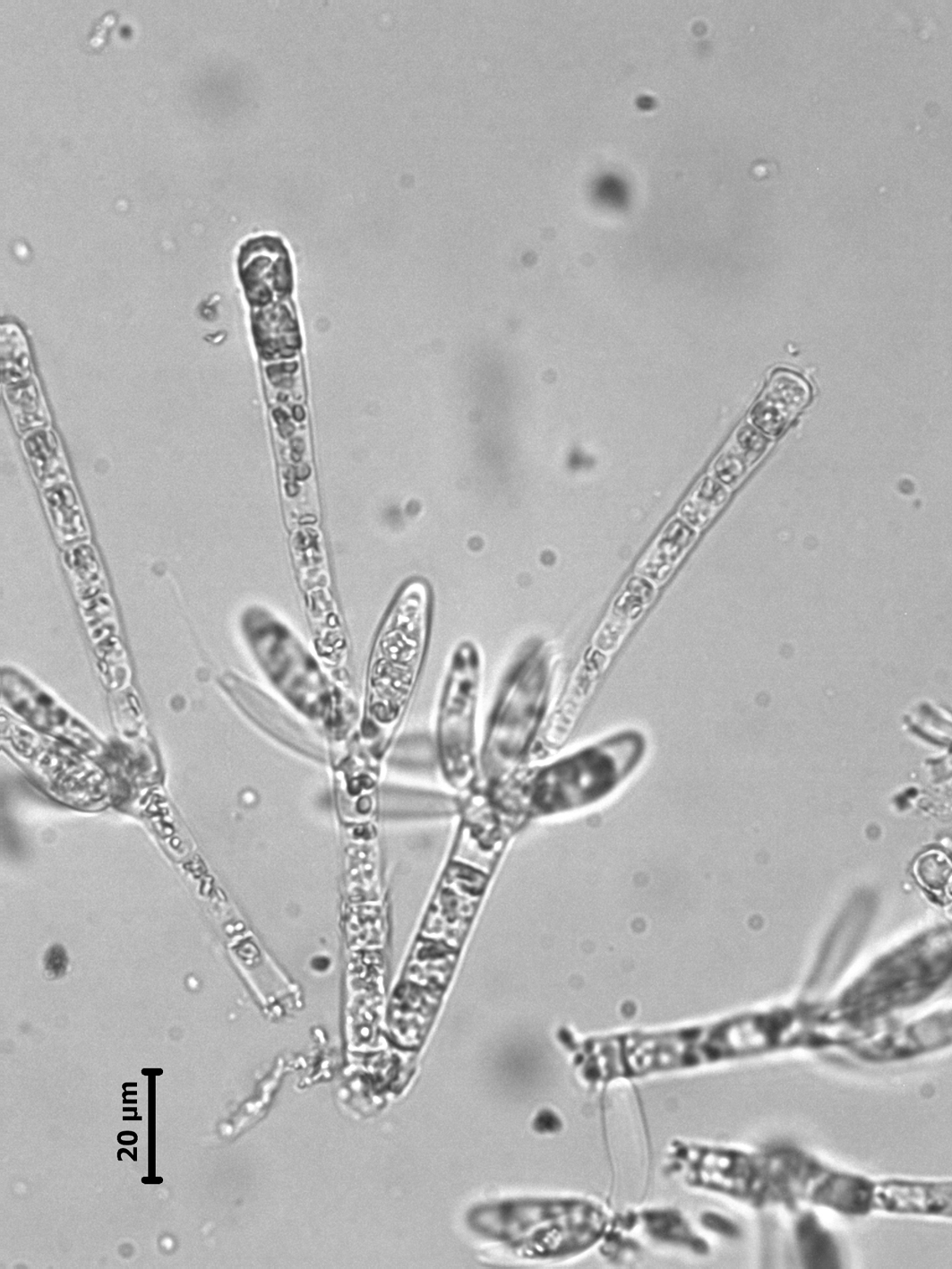
Zeacarpa leiomorpha, squash preparation with loose reproductive filaments bearing unilocular sporangia.
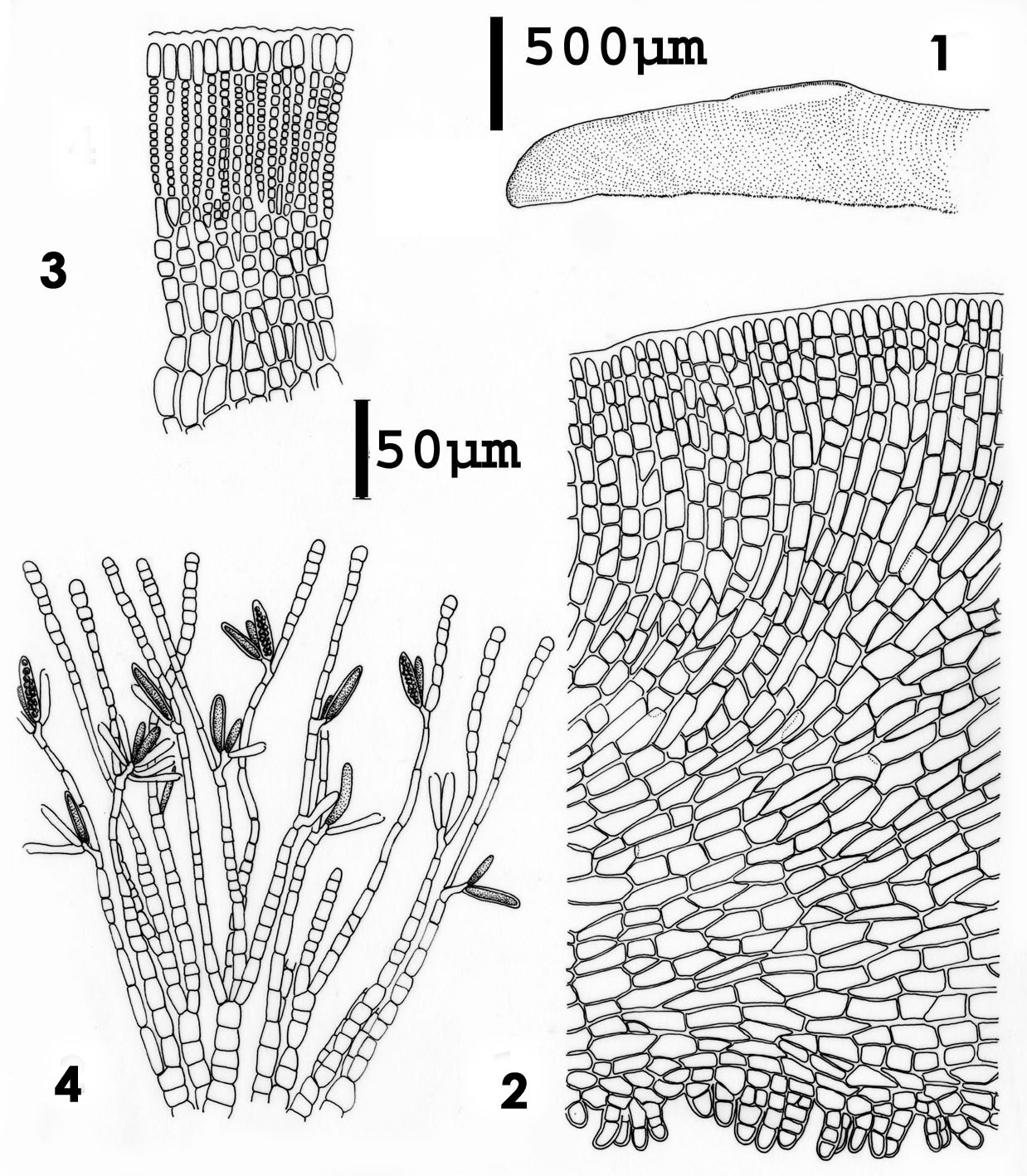
Zeacarpa leiomorpha. 1. Radial vertical section through crust with sorus of plurilocular sporangia (but see note – this may be Ralfsia). 2. Section of vegetative thallus (note multicellular rhizoids). 3. Plurilocular sporangia (but see note). 4. Unilocular sporangia on paraphyses. Illustrations reproduced from Stegenga et al. (1997).
References Zeacarpa
Anderson, R.J., Simons, R.H. & Bolton, J.J. (1988). Zeacarpa leiomorpha (Ralfsiaceae), a new genus and species of crustose marine Phaeophyceae from southern Africa. Phycologia 27: 319-326.
Kawai, H., Hanyuda, T., Bolton, J.J. and R. J. Anderson. 2016. Molecular phylogeny of Zeacarpa (Ralfsiales, Phaeophyceae) proposing a new family Zeacarpaceae and its transfer to Nemodermatales. Journal of Phycology. DOI: 10.1111/jpy.12419.
Stegenga, H., Bolton, J.J. and R. J. Anderson. 1997. Seaweeds of the South African west coast. Contributions from the Bolus Herbarium 18: 655 pp.
Cite this record as:
Anderson RJ, Stegenga H, Bolton JJ. 2016. Seaweeds of the South African South Coast.
World Wide Web electronic publication, University of Cape Town, http://southafrseaweeds.uct.ac.za; Accessed on 21 December 2025.